#Varecia rubra
Explore tagged Tumblr posts
Text
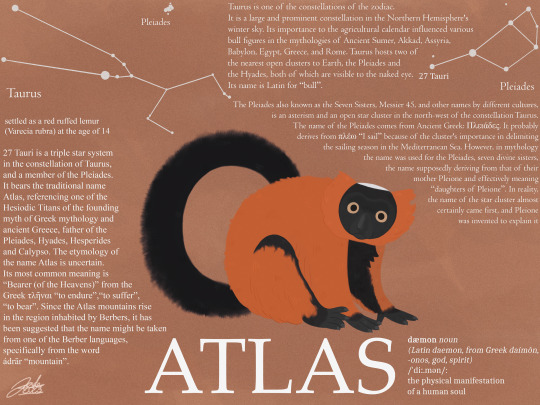

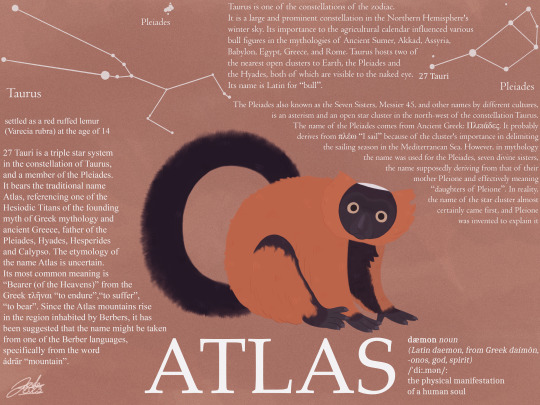
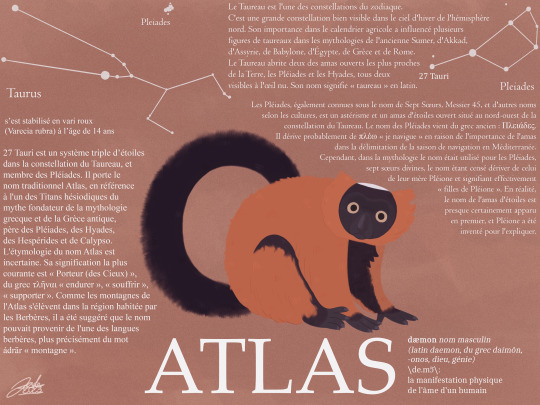
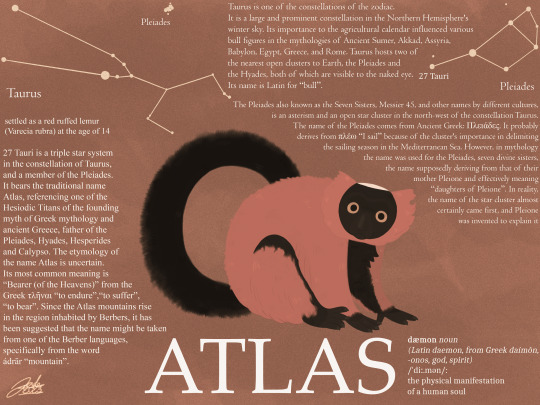
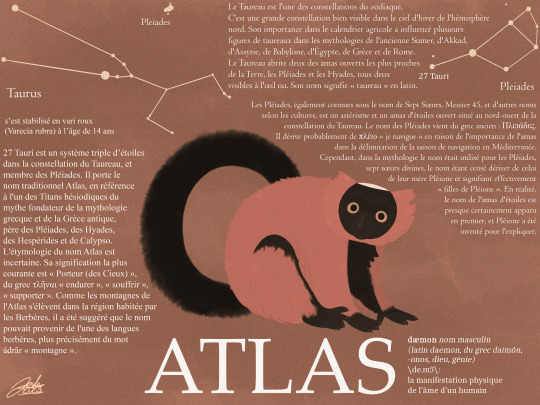
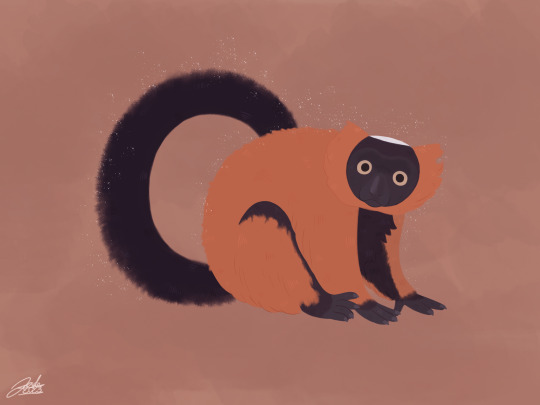


A friend’s dæmon or at least how I believe he would look like in Lyra’s world. It’s a red ruffed lemur, I believe it fits her personality (ENFP, Lawful Good, Hufflepuff). Also she’s a Taurus. (Again I found it thanks to the analysis from The Dæmon Forum, it helped me a lot!)
There are different color variations of this drawing once again, I wanted to include Dust, you’ll see it in the last pictures, and I did English and French versions for the texts!
Hope you like it! 🧡
Source for most of the information : Wikipedia
(there is a lot of text compared to the previous ones I know sorry;; also I hope that him staring at you won't be too scary lmao)
#my drawings#digital art#hdm#hdm fanart#dæmon#daemon#daemonism#dæmonism#daemian#dæmian#fanart#his dark materials#his dark materials fanart#red ruffed lemur#vari roux#varecia rubra#lémurien#lemur#animal#mammal#mammifère#constellation#astronomie#astrologie#astronomy#astrology#étoile#star#taurus#primates
30 notes
·
View notes
Text



Red ruffed lemur (Varecia rubra), family Lemuridae
Primarily eat fruit, but are also known to eat leaves and plant shoots.
Avifauna, taken July 2024
2 notes
·
View notes
Text
A Fruit Lover

A Red Ruffed Lemur casting a fugitive look at visitors as it scrambles around its habitat in the local zoo. Photo credit: Eleanor Chua.
#photographers on tumblr#animal pics#canon eos-m5#canon photography#flora fauna#red ruffed lemur photos#tamron 16-300mm#Varecia rubra#wildlife photography
0 notes
Video
IMG_4979 by davemacnoodles59a Via Flickr: I took this shot of this Red Ruffed Lemur ( Varecia rubra ) when out for a wee walk around Artis Royal Zoo in Amsterdam during my wee Holland Trip June 2023 .... Copyright davemacnoodles59
#June 2023#Summer Time#Raw#My Wee Holland Trip June 2023#Green#Nature#Animal#Mammal#Primate#Monkey#Lemur#Red Ruffed Lemur#Varecia rubra#Red Ruffed Lemur at Artis Royal Zoo in Amsterdam#Red Ruffed Lemur at Amsterdam Zoo#Red Ruffed Lemur at Amsterdam#Red Ruffed Lemur in Holland#Red Ruffed Lemur in Europe#Zoo#Artis Royal Zoo in Amsterdam#Amsterdam Zoo#Zoo in Holland#Zoo in the Netherlands#Zoo in Europe#Tourist Attraction#Visitor Attraction#Amsterdam Attraction#Holland Attraction#Europe Attraction#Wee Walk`s
0 notes
Text

Red-ruffed Lemur (Varecia rubra), family Lemuridae, found in the rainforests of Masoala, NE Madagascar
CRITICALLY ENDANGERED.
photograph by Charles J. Sharp
171 notes
·
View notes
Text

Red Ruffed Lemur (Varecia rubra) - (c) SaritaWolf - please do not repost
0 notes
Photo

Red-ruffed lemur (Varecia rubra)
Photo by Julian Mr.Lemur
#captive animal#red ruffed lemur#ruffed lemur#varecia rubra#varecia#lemuridae#lemuroidea#lemuriformes#strepsirrhini#primates#primatomorpha#euarchontoglires#boreoeutheria#eutheria#mammalia#tetrapoda#vertebrata#chordata
52 notes
·
View notes
Photo










Madagascar!, Bronx Zoo (No. 7)
The ring-tailed vontsira, locally still known as the ring-tailed mongoose (Galidia elegans) is a euplerid in the subfamily Galidiinae, a carnivoran native to Madagascar.
There is much disagreement about the placement of Madagascar's carnivores, including the ring-tailed vontsira, within the phylogenetic tree. A 2003 study reported evidence that the Malagasy Carnivora evolved from a single herpestid ancestor.
A monotypic genus, Galidia literally means "little weasel", being a diminutive form of galē (γαλῆ, "weasel" in ancient Greek). Its local common name is vontsira mena, ‘red vontsira’ in Malagasy.
The ring-tailed vontsira is relatively small but is the largest member of the subfamily Galidiinae. It is usually 32 to 38 cm (12.5 to 15 in) long and weighs only 700 to 900 g (25 to 32 oz). Its body is long and slender, and the rounded head has a pointed snout. The body is a dark red color and the feet are black. As the name implies, its bushy tail is covered with black and red rings and is similar to the red panda.
Ring-tailed vontsira are very agile, and good climbers. They are quite playful and are active during the day. Their habitat consists of humid forests. Their diet is mostly of small mammals, invertebrates, fish, reptiles and eggs, but they occasionally eat insects and fruit.
The population of ring-tailed vontsira has decreased by 20% during the period 1989-1999 due to habitat loss. Another problem is competition with the small Indian civet (Viverricula indica).
Source: Wikipedia
#Red-ruffed Lemur#ring-tailed mongoose#ring-tailed vontsira#Madagascar!#Bronx Zoo#my favorite zoo#animal#behind glass#Galidia elegans#travel#original photography#flora#fauna#nature#Varecia rubra#New York City#USA#vacation#summer 2019#close up#tongue#plant#Eastern USA#tourist attraction#landmark#indoors
16 notes
·
View notes
Photo


Red Ruffed Lemur Varecia rubra
#varecia rubra#varecia#ruffed lemur#lemur#red ruffed lemur#red#ginger#primate#animal#animalia#zoology#mammal#mammalia#mammology#strepsirrhini#lemuridae#wildlife#wildlife biology#nature#endangered#endangered species#endangered wildlife#critically endangered
434 notes
·
View notes
Text






Red ruffed lemur, varecia rubra
#red ruffed lemur#redruffed lemur#red ruff lemur#redruff lemur#varecia rubra#wildlife safari#winston#oregon
8 notes
·
View notes
Photo




snaps from work this weekend :)
#red ruffed lemur#work#zookeeping#zoo life#zookeeper life#conservation#madagascar#varecia rubra#they have it ruff...#... get it ?#prosimians
2 notes
·
View notes
Photo

Red-ruffed Lemur (Varecia rubra) calling by Wade Tregaskis https://flic.kr/p/26d7X7R
18 notes
·
View notes
Text

Red Ruffed Lemur
Varecia rubra
Source: Here
125 notes
·
View notes
Photo










red ruffed lemur (Varecia rubra)
The red ruffed lemur (Varecia rubra) is one of two species in the genus Varecia, the ruffed lemurs; the other is the black-and-white ruffed lemur (Varecia variegata). Like all lemurs, it is native to Madagascar. It occurs only in the rainforests of Masoala, in the northeast of the island.[1] It is one of the largest primates of Madagascar with a body length of 53 cm, a tail length of 60 cm and a weight of 3.3–3.6 kg. Its soft, thick fur is red and black in color and sports a buff or cream colored spot at the nape, but a few are known to have a white or pink patch on the back of the limbs or digits and a ring on the base of the tail in a similar color.
From Wikipedia, the free encyclopedia
90 notes
·
View notes
Text

Red-ruffed Lemur (Varecia rubra), family Lemuridae, found in the rainforests of Masoala, NE Madagascar
CRITICALLY ENDANGERED.
photograph by Megh Roy Choudhury
141 notes
·
View notes
Text
In need of Russian to English translation
I have an academic article that I cannot just copy and paste to translation websites. It's like 5 pages too. I need an actual human being to help me! I have a 10-20 page paper I need to write and this is the only article that addresses the exact species I'm studying in relation to behavior and grooming.
If you or anyone you know can help me, please message me! I'm willing to pay a small fee as well!
#russian#english#translation#translator#language#help#academic#article#paper#research#lemurs#varecia rubra#red ruffed lemurs#allogrooming#grooming#please#scientific#study#journal#behavior#animal behavior#translate
0 notes